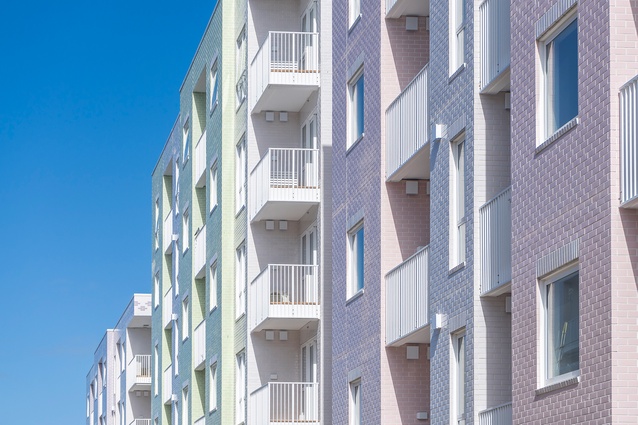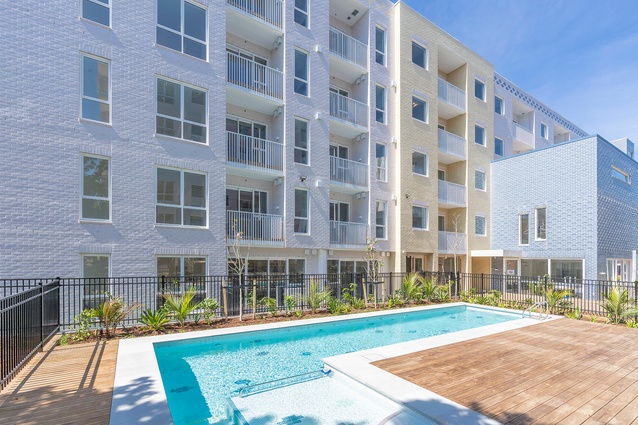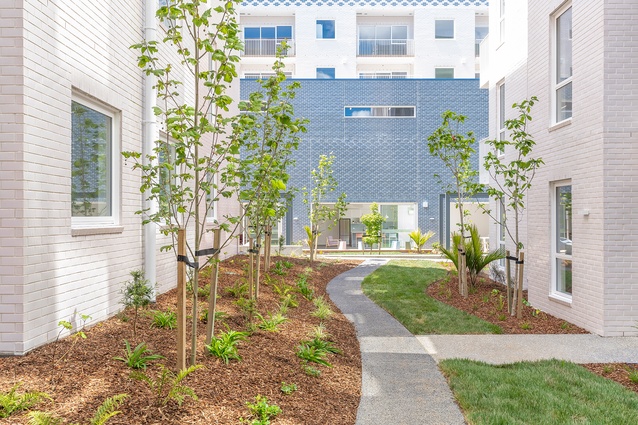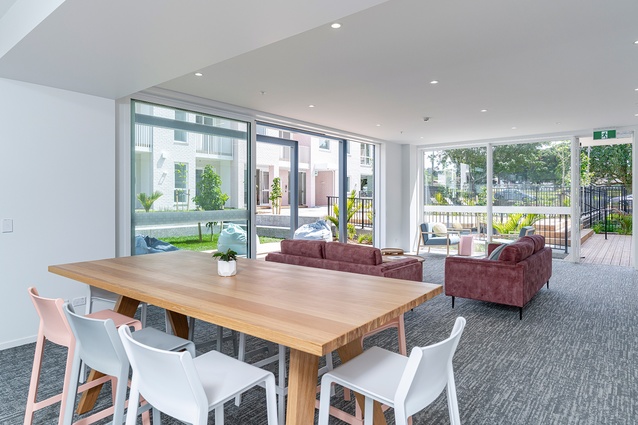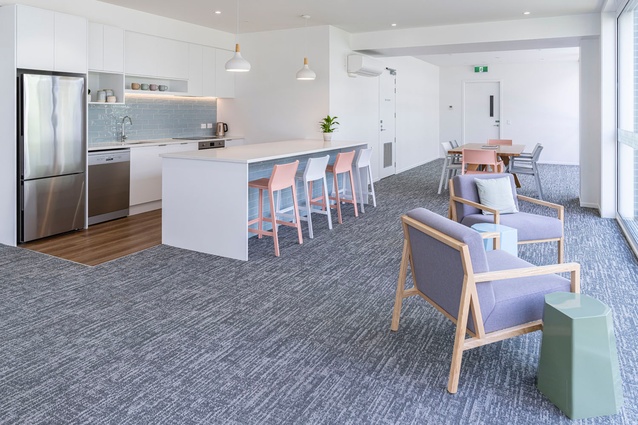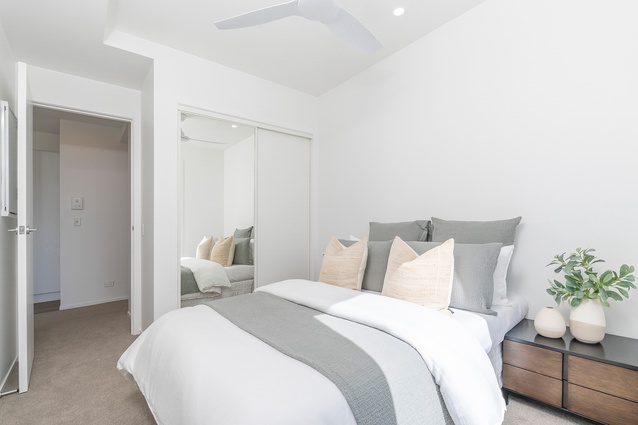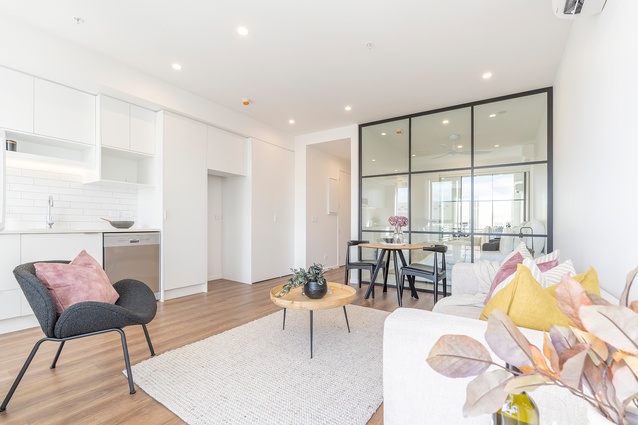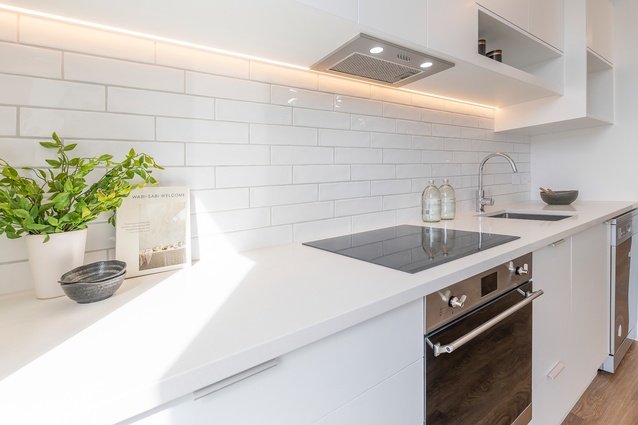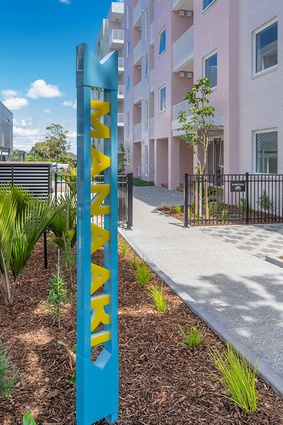Manaaki te whare, Manaaki te whenua, Manaaki te iwi
The newly opened Manaaki in the suburb of Onehunga is the largest apartment complex to have been built outside of the Auckland’s CBD to date — its lighthearted façade the first clue of the ‘brave new world’ its vanguard compared the pioneering build to.
“Manaaki te whare, manaaki te whenua, manaaki te iwi.”
- Paul Majurey, Eke Panuku Chair.
Set back from the main road, Manaaki appears as if a mirage, the development’s four, five-floor buildings of sherbert-coloured glazed bricks and shiny new architecture, communicating a strangely optimistic outlook in a contrasting context of bygone-era single dwellings, cracked sidewalks and weedy berms.
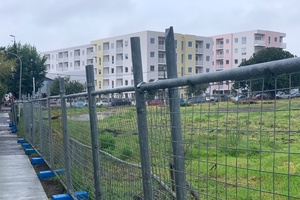
Described by some as ‘Miami meets Onehunga’, the pastel complex of apartments is located on 9 Jordan Avenue, Onehunga, on a 7887m2 site, 600m away from Onehunga town centre and 8km away from the CBD. Positioned with views to the west onto Jordan Park, a quiet cul-de-sac to its rear, and close to transport and amenities, this urban development is the 18th from Ockham Residential and the fourth in the Marutūāhu-Ockham partnership.
The biggest flex from the partnership thus far, Manaaki is, according to sources, the largest apartment complex to have ever been built outside the Auckland CBD, and is, according to co-founder of Ockham Residential, Mark Todd, “…literally the embodiment of the Auckland [Unitary] Plan’s idea of a quality compact city.”
Comprised of 210 apartments, 87 Kiwibuild units and built with quality, design and residents’ comfort in mind, the complex offers 1–3 bedroom apartments ranging from $740,000 to $895,000+, with a staggering 72% being sold to first home buyers upon its opening.
The distinctive architecture Ockham’s developments are known for was led (this time), by in-house architect Tania Wong, with Gavin Armstrong as project architect, working on-site to maintain the design integrity throughout construction. Urban design principles and sustainable living ideologies play a big part in the design, with 250 bike parks, EV chargers, residents’ lounge and pool, in-house café, and one dedicated shared office space per building.
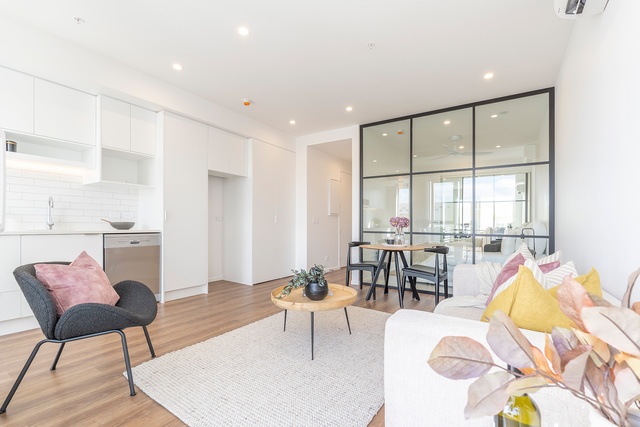
Sustainability was also the reasoning behind the custom-glazed brick façade — being low-maintenance, resilient and enduring, and arguably becoming an Ockham signature with projects like The Greenhouse taking this to an extreme. Says Wong of the colour choice for Manaaki’s brick façade: “I wanted Manaaki to look different. I wanted its four buildings to look light. …These colours on glossy bricks are sumptuous — thrillingly contemporary and yet timeless.”
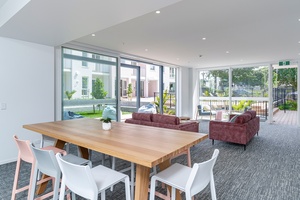
Drawing on Tania Wong’s architectural colour palette which drew inspiration from Napier’s Art Deco buildings and the Italian towns of Cinque Terre is signage designed by sister Adrienne Wong, who also worked together with spatial designer, Caitlin Hogan, on the interior furniture selection for the residents’ lounge and communal workspaces. In keeping with the exterior palette they chose a range of soft, muted colours. Worded by Peter Malcouronne, Ockham’s head of marketing and communications: “Inside, it’s a feast for the eyes. Sage green, rhubarb pink, and Blu Tack™ blue furniture adorn the communal lounges. Glossy, textured tiling continues its reign indoors.”
Other hints of the architect’s influence are seen in the high-stud ceilings and 0verheight internal doors, with other features such as double-glazing, solid 13mm GIB plasterboard-lined walls, modern fittings and quality finishes communicating a focus on comfort and quality from both the architect and developer.
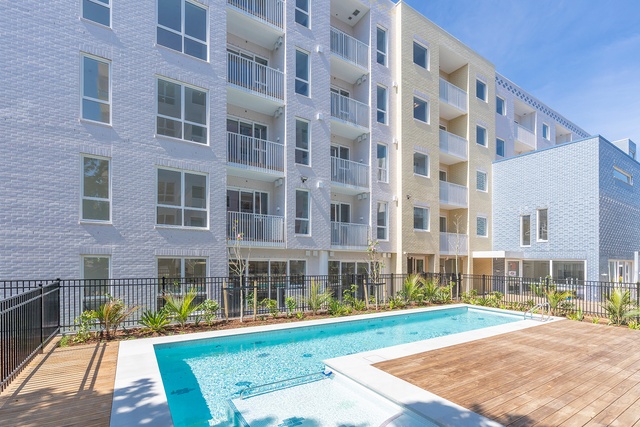
In line with the development’s urban design principles, is the landscape architecture by Bridget Gilbert and Kathryn Holyoake. Generous central outdoor communal spaces have been designed for resident gatherings with subtropical plantings adding to the Miami vibe. Underground rainwater retention tanks capable of holding up to 90,000l will irrigate the trees and subtropical gardens throughout the summer months. These outdoor spaces, including gardens, lawns, seating, pool area and rooftop gardens (seen from the fourth and fifth floors), cultivate community interactions and a sense of pride — something that our suburbs are in dire need of — and which the name Manaaki embodies. Says Todd:
“Manaaki is a special word and an even more beautiful concept. It means ‘to support, to take care of… to show respect, generosity and concern for others.’ It’s a fine principle to live by; it is a fitting ideal for us to work towards.”
Manaaki was officially opened on 31 October with a ribbon-cutting ceremony by Mayor Wayne Brown, who came face to face with his so-called public nemesis, Eke Panuku Chair, Paul Majurey. The pair insisted that despite what has been written about them in the papers, they get along very well, with Majury going as far as saying “We’re the best of mates” and commending the Mayor, as well as Todd for “getting shit done”.
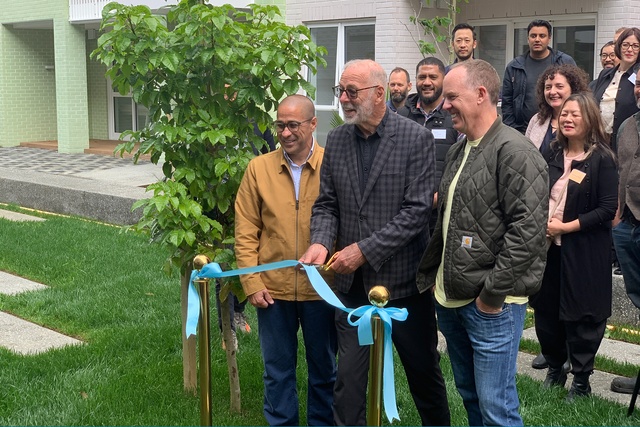
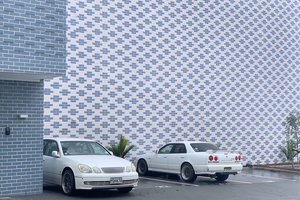
The block directly in front of Manaaki is to be developed into Kainga Ora social housing, which according to Majury, was one of the unique challenges of the development and prompted several discussions between Todd, himself, and Kainga Ora.
Another challenge according to Todd, was getting consent for the public-facing wall enclosing the multilevel carpark. Says architect, Tania Wong of the brick façade design: “The three-level amenity space differs in scale which lent its façade to be aesthetically different. The brick façade recesses in and out creating a pattern highlighted by its shadow lines. This element also screens the three-level internal carpark behind.”
Mayor Brown may have inadvertently reflected the public’s general anxiety towards the high-rise building typology and social housing in particular when he remarked in his speech: “These are homes, many other developers couldn’t learn what you’ve done here with Manaaki and the value you place on homes and communities, for people and families.”
It remains to be seen how the Kainga Ora development (five years into the planning/design phase), will consider its neighbour architecturally, but what is clear, is that Ockham Residential is choosing to lead by example, creating an appealing offering for first home buyers and people-centric, sustainable architecture that delivers many advantages of intensive living models. Summarising the accomplishment, Majurey ended his speech on opening day with:
“To paraphrase from some 60 years ago an advocate for the then new frontier: ‘We do these things not because they’re easy, but because they are hard, because the goal that serves best to achieving energies and skills is worthwhile’. That was talking about going to the moon — we’re not quite doing that here — but we like to think in terms of shooting high, shooting long and for a vision and brave outcomes for people.”
Learn more at www.ockham.co.nz

